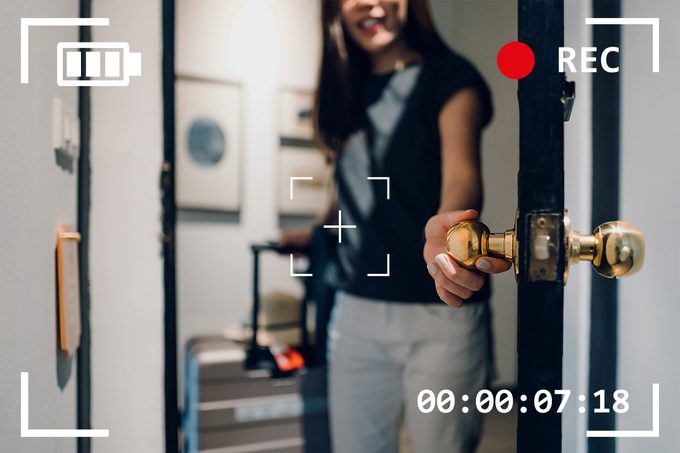How to Spot Hidden Cameras in Any Accommodation

Protecting Your Privacy While Traveling
When you're on the road, the last thing you want to worry about is someone watching your every move. However, hidden cameras in rental accommodations have become a growing concern. According to a 2019 survey, 11% of respondents reported discovering a hidden camera in their Airbnb stay. The rise in availability of affordable camera technology has made it easier for individuals to install these devices without detection.
Jack Plaxe, a security consultant at Guidepost Solutions, explains that low-cost cameras with pinhole lenses are now easily accessible through online retailers like Amazon. These small devices can be concealed in everyday objects, making them nearly invisible to the untrained eye. Mike O’Rourke, CEO of Advanced Operational Concepts, adds that modern spy cameras are so compact that they can be hidden in items like clock radios, smoke detectors, and lamps without any obvious signs.
While it might be difficult for the average traveler to spot these devices, there are several steps you can take to reduce the risk. Before your next trip, consider learning about the ways hidden cameras can be detected and how to protect yourself while staying in hotels or vacation rentals.
How to Detect Hidden Cameras
One of the first things to do when checking for hidden cameras is to visually scan the room. Look for unusual placements of furniture or appliances, such as a lamp positioned directly toward the bed. Small holes in walls or ceilings may also be indicators of a hidden device. To make this process easier, turn off the lights and use a flashlight to look for glints from a camera lens.
Paul Koblitz, managing director of technical services at TrustedSec, suggests using a bug detector to identify signals from hidden cameras, body wires, or GPS devices. These tools can alert you if there are any suspicious signals in your environment. It’s wise to pack one of these devices along with your other travel essentials.
Where to Look for Hidden Cameras
Certain everyday items are more likely to house hidden cameras than others. According to Koblitz, cameras require line of sight, power, and either a network connection or internal storage. This means they are often placed in locations that can hide both the device and its wiring.
Common places to check include lamps, power adapters, outlet covers, smoke detectors, thermostats, vents, telephones, alarm clocks, TVs, and even picture frames. If you find a bedside clock, O’Rourke recommends unplugging it and placing it in a drawer. Covering it with a towel can also help prevent any potential surveillance.
Using an infrared light detector can also be useful in identifying cameras that operate in low-light conditions. Additionally, some surprising locations, such as wall sockets or decorative items, may conceal hidden devices.
Using Your Smartphone to Find Hidden Cameras
Your smartphone can be a powerful tool in detecting hidden cameras. One method involves using the phone’s camera to detect infrared light emitted by night vision cameras. Open the camera app, switch to selfie mode, and darken the room as much as possible. Slowly scan the area with the camera lens, looking for any glowing purple or white lights.
Another option is to use a network scanner app like Fing. Connect your phone to the Wi-Fi network and open the app. Android users should tap Refresh to start scanning, while iPhone users will see the scan begin automatically. Once the scan is complete, look for devices from manufacturers like Nest, Arlo, or Wyze, or IP addresses labeled as “IP Camera.”
If you don’t find any hidden cameras, be aware of other red flags that may indicate a problematic accommodation.
Protecting Your Privacy While Traveling Abroad
Hidden cameras are less common in U.S. hotels, according to Plaxe and O’Rourke. However, the risk increases in smaller, budget-friendly accommodations. Internationally, the situation is different, especially in countries known for targeting business travelers. O’Rourke advises taking extra precautions when traveling to places like China or Russia, where sensitive information may be at risk.
He suggests avoiding using your laptop in areas where criminals might expect you to work, such as hotel lobbies. Covering your door’s peephole is also important, as some people have used peephole reversers to film inside hotel rooms. Erin Andrews, a sports reporter, was a victim of this method a decade ago and received a significant settlement in court.
What to Do If You Find a Hidden Camera
If you discover a hidden camera or notice something suspicious, Koblitz recommends leaving the premises immediately and reporting the issue to the hotel, booking agency, or Airbnb customer service. Contacting local law enforcement is also advised if you feel unsafe. However, he emphasizes not touching or moving the device.
Even after returning home, be aware that certain household items could potentially be used for surveillance. Stay informed and vigilant to protect your privacy wherever you go.
Post a Comment for "How to Spot Hidden Cameras in Any Accommodation"
Post a Comment